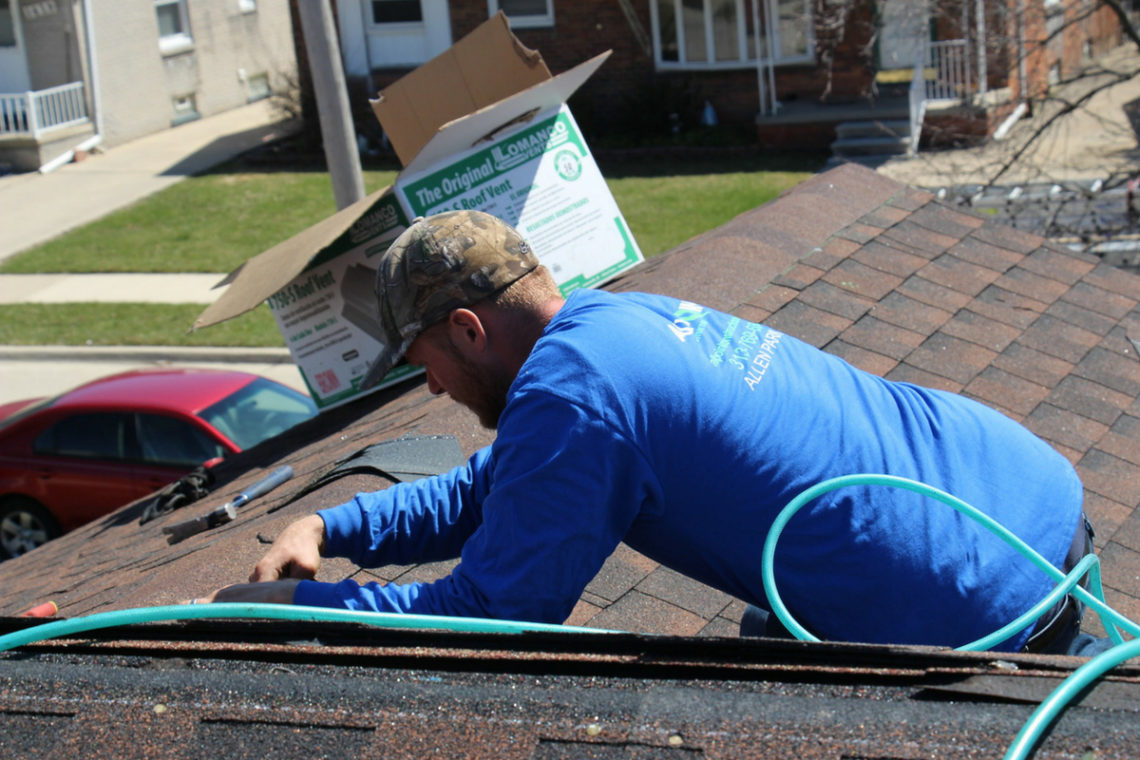Sometimes, especially in Michigan, roofing can be an emergency. Your local roofers always do their best to arrive and do repairs quickly when a storm, tree branch, or other unfortunate circumstance has put the integrity of your roof and home at risk.
However, that doesn’t mean that there isn’t a perfect time to schedule your roofing installation or repair if you have a little time to wait. Outside of the storm season, the vast majority of roofing work is regular maintenance and minor repairs that keep your roof in good condition and sturdy enough to withstand the next storm. This means you have some wiggle room to think about your roofing schedule, both how long you can afford to wait for a roofing installation and when the right time would be to schedule for repairs. While your local roofing company will always be happy to discuss scheduling with you, it can also help to truly understand the factors at play.
So for today, we’re here to share with you what makes the best conditions for roof work, particularly full or partial reinstallations and extensive repairs that may take more than a single day of work.
The Condition of Your Roof
The first thing to calculate for is just how much work needs to be done on your roof and how safe it is to be up there. These contribute to how long your job will take to complete and how careful your roofers will need to be while they’re up there. Knowing how long a roof installation or repair job will take can help you complete the rest of your calculations because you know if you’ll be planning for a few hours, a day, or a good part of a week worth of roofing work to schedule.

Clear Skies
After the general safety of being up on your roof, the biggest concern for a roofer is the weather. Roofers are out there exposed to the elements and, unfortunately, so too is the inside of your attic when roofers are replacing shingles and reinforcing your roof infrastructure. Even a tiny sprinkling of rain can allow water to get into your home, not to mention making the roof more slippery and dangerous for roofers to work on.
Even for emergency calls, roofers need to wait until the weatherman predicts clear skies, though they might make a quick exception if the skies are clear despite the weather report. If you have time to schedule a few weeks or even months in the future, make sure to aim for days with perfectly clear weather and be understanding of delays if rain happens to overlap with our original schedule days.
The Goldilocks Zone
Many people don’t know this, but roofing shingles have an ideal temperature zone and outside of this range, it is nearly impossible for your roofers to install. The temperature on the day roofers are up there installing shingles will determine how easy it is to work with the shingles, seal them to your roof, and what is requires to maintain the manufacturer’s warranty. The ideal temperature range for roofing, also known as a “Goldilocks Zone” is between 40 and 80 degrees Fahrenheit. It’s called this because the day is neither too hot or too cold.
Trying to install a roof in temperatures approaching or below 40 degrees can cause problems with the adhesive. It won’t soften and stick the way it’s supposed to, causing the shingles to sit more like loose shingles on your roof instead of forming a protective seal. For emergency winter roofing tasks, roofers will need to switch to a special winter adhesive to maintain your roofing warranty.
Alternately, days that approach or go above 80 degrees make the asphalt shingles themselves too soft and more prone to damage before they become a cohesive part of your roof. The shingles become overly pliable and installers can accidentally drive nails too deep and even walking over the fresh shingles can rub off the protective granular layer.
Pricing and Availability
Another concern when scheduling your roofing installation and repair dates is the price and availability of your local roofers. Late summer and early fall are usually the busiest seasons for roofers because the summer has started to cool and the cold weather storms haven’t blown in yet. However, because so many calls and work orders get scheduled during this time, it also tends to be the most expensive time to get extensive roof work done and you might even find yourself on several-week-long waiting list depending on the local demand for your roofer’s time.
When you have a few months to plan ahead, talk to your roofer about scheduling during clear weather during one of their lower-traffic months. This can not only save you money, it also reduces the rush your roofers may be in because they won’t have a dozen other clients waiting for roof repairs after you.
Don’t Wait Too Long
Finally, it may be tempting to put off roof reinstallation for as long as possible to ‘extend the life’ of your roof, but in reality, this is just setting yourself up for a future emergency when your roof begins to leak. If you are approaching your roof’s natural lifespan, take this opportunity to strategically schedule the roof installation you need at a time when the weather is clear and your roofers are not overbooked. This is the best away to get a good price and the full attention of your roofers for however long your new roof installation will take.
Roof maintenance, repair, and installation is not the sort of thing you can put off for long. Emergencies may need to be worked on immediately but you can get the best price, quality, and ensure a better experience for your roofers by thinking carefully about when you schedule your work order. Talk to your local roofers about the best time to get your needed roof work done and be sure to schedule before the next storm season to keep the interior of your home safe. If you’d like more information about how and when to schedule roof installation and repair in Plymouth, Michigan contact us today!










